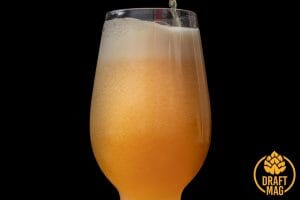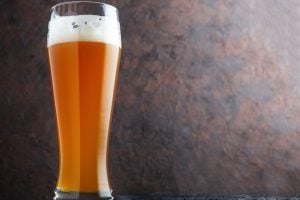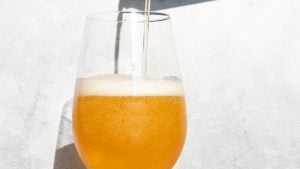Amber Ale Recipe: Make Your Best American Amber Ale Now
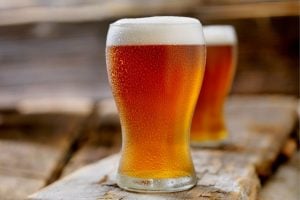 This is the amber ale recipe you have been looking for. The American amber ale, typically known as amber ale — or red ale in the Pacific Northwest — is a beer style with bold hops and discrete bitterness. It is darker than similar beers, like the pale ale, with stronger and more prominent notes of malt.
This is the amber ale recipe you have been looking for. The American amber ale, typically known as amber ale — or red ale in the Pacific Northwest — is a beer style with bold hops and discrete bitterness. It is darker than similar beers, like the pale ale, with stronger and more prominent notes of malt.
Making an amber ale at home is super easy. The best part, though, are the inexpensive equipment and tools. If you are a seasoned homebrewer, chances are you already have most of the required pieces of equipment. But even as a beginner, you wouldn’t need much initial investment.
Everything We Know About the Amber Ale: A Quick Look
There is no best beer style badge. Beer is an extremely subjective drink. But it is undeniable that the color of amber ales is particularly attractive. According to the Beer Judge Certification Program (BJCP), this beer style falls under the red ale category. This means it has a coppery-looking finish with outstanding notes of caramel sweetness. The best part about this beer style is the classic balance between sweetness and bitterness, which makes it an easy drink.
The all-grain amber ale is often described as a more malty version of the American pale ale. Ambers allow you to get creative. They are like a creative playground for the experimental brewers. When brewing an amber ale, you want to make sure it is darker, maltier than the pale ale with noticeable hops and bitterness, but also something that shows the sweetness of caramel.
If you want something less bitter than an IPA with lesser alcohol content, an amber ale might be the perfect choice. From a coppery-brown color to a low hop aroma and a hop flavor higher than moderate, this beer has a clean fermentation profile. While the amount of crystal malt needed in this beer is a debatable topic, the American amber ale has higher flavors of caramel which balances the bitterness of the malt.
Whether you are looking at mastering the art of homebrewing, or are just looking to try the new American amber ale recipe, this recipe will give you what you need.
How To Brew an Amber Ale: How the Beer Experts Do It
The American amber ale, or the red ale, is a super robust, rich beer, easily enjoyable under the sun as well as by the fire. It has a very solid fermentation profile, with less fruity esters. Amber ales can have moderate to high hop flavor, with lesser dominant hops. Malt sweetness and a caramel flavor are desired.
An amber ale shouldn’t have a roasty character like that of a brown ale. Some versions can contain a higher ABV (this is subjective to brewers), but the final finish of the beer is expected to be smooth and clear.
Bitterness could vary between 25-40 IBUs which gives the beer an overall balance for its malty style. The color gradation is amber to copper-gold, with an SRM of 10-17. Ferment around 70 degrees Fahrenheit, without fluctuating the temperature too much, to get the desired outcome.
– Equipment Needed To Brew an Amber Ale
This basic amber ale recipe is super easy to make. With the right tools at your disposal, you will have your brew ready in no time. Here is a list of the pieces of equipment and tools you will need in the process:
- A stovetop
- Long-handled stainless steel spoon
- 5-gallon pot
- Strainer
- Cooking thermometer
- Measuring scale
- Foil paper
- Bottles
- 5-gallon bucket
- Sanitizer
- A paint strainer bag
– Ingredients and Hops
Let’s take a look at the ingredients we will be needing for your amber style beer:
 6-ounce centennial (60 minutes)
6-ounce centennial (60 minutes)- 1-ounce cascade (20 minutes)
- Wyeast1272 American Ale II
- 11-ounce crystal 80 malt
- 11-ounce crystal 40 malt
- 5-ounce corn sugar
- 5-pound pale dry malt extract
- 2-pound pilsner dry malt extract
– American Amber Ale Recipe: Brew Your Ale in Six Simple Steps
- Mill your grain: This just means you will have to extract the sugar out of your grain to start the beer-making process. Honestly, this is the less fun part and requires a little bit of experience. If the grains are crushed too much, you may end up with excess residue. So, with the help of a local homebrew shop, you must mill the malt, remove the outside layer, break the grain and extract the sugar. Once your grains are ready, you can head towards starting the brewing process.
- Extract the flavors from the grain: This step involves steeping water using the grains to extract flavors for the beer. This is an important step, as it will define the final deep, rich color of the beer. Place the 5-gallon pot on the stovetop and fill it with 2 gallons of water and bring the water to boil. On the side, transfer the milled grains of crystal 80 and crystal 40 to a paint strainer bag. Tie the bag on top, leaving some room for the grains to bloat when coming in contact with hot water. Bring the water to 170 degrees Fahrenheit and turn the stove off. Like a teabag, put the grain bag into hot water, slowly. Leave the bag of grains in hot water for one hour for the right amount of flavors to be extracted.
- Add malt extracts and sugars: Take the bag of grains out after one hour and slowly add the malt extracts into the pot of steeped water. Keep stirring till all the extracts are completely dissolved. We now have the wort ready to be fermented.
- Place the pot of wort on a stovetop and turn the heat on bringing the wort to a boil. Once the wort is boiled, set the timer for one hour and add the Centennials hops first. This is done first, to add a subtle bitterness to the beer. After 60 minutes are up, turn the heat off and add the 20 minute Cascade hops. Set the timer to 20 minutes, and wait for the wort to extract all the flavors and aromas.
- Pitch yeast roo the wort: Reaching this step means we are nearing the end of the brewing process. Allow the wort to cool down to 70 degrees Fahrenheit. A simple way to cool the wort is to place it in a sink filled with ice water. Once the wort is cooled, transfer it into the fermentation bucket and add up to 3 gallons of water. Then, you cut the packet of Wyeast with clean scissors. Slowly, pitch the yeast into the wort. This step will ferment the wort into alcohol and carbon dioxide. Cover the bucket with tin foil.
- Store the fermentation bucket: Place the bucket in a clean, dry place away from sunlight. Leave it undisturbed for about two to three weeks. After the wait time, your amber ale will be ready to be transferred into bottles and ready to be enjoyed.
– Pro Tips
- Sanitize each of your tools and equipment before using them to prevent contamination.
- Malt extract should be thoroughly stirred, to avoid lumps.
- Before bottling your beer, add dissolved corn sugar for carbonation.
Hops for Amber Ale: These Are the Ones You Can Use
The amber-colored beer gets its flavors and colors from a lot of specialty malts. Some brewers suggest using single dark or moderate colored crystal malts. Our experts normally use a combination of two malts. This helps bring balance in your beer. While the mid-colored crystal mals add caramel flavors, the darker ones add more plum or raisin-like flavors.
However, the combination of malts really depends on what you want your goal product to be. It is best advised to use mid-colored malts, for a more restrained version of the beer. If you are brewing a bolder flavor, darker crystal malts would be the preferred choice.
There is flexibility in the use of hops for amber ale. The beer isn’t extremely bitter. It is best advised to target a bitterness to a gravity ratio of 0.5 to 0.7 for a balanced amber ale. Generally, dark red ambers have higher hop flavors, while lighter ones have lower hop flavors. Hops for amber ale should preferably be cascade, Simcoe, or Centennial.
FAQ
What’s the difference between American Amber Ale and Red Ale?
American Amber Ale is a balance between malt and hops, while Red Ale has a stronger malt presence.
Is an IPA an Amber Ale?
IPA is not an Amber Ale. It has a higher hop profile and bitterness.
Is Budweiser an Amber Ale?
Budweiser is not an Amber Ale. It is a light lager with minimal malt and hop flavor.
Conclusion
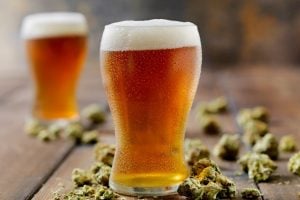 Brewing an American amber ale isn’t like climbing a mountain, it is fairly an easy brew. Even if you are a fresher with a moderate knowledge in brewing beers, with the right tools and a perfect recipe brewing the red ale wouldn’t be much of a task. As long as you stick to the right combination of hops and malts, the final brew would be your desired goal.
Brewing an American amber ale isn’t like climbing a mountain, it is fairly an easy brew. Even if you are a fresher with a moderate knowledge in brewing beers, with the right tools and a perfect recipe brewing the red ale wouldn’t be much of a task. As long as you stick to the right combination of hops and malts, the final brew would be your desired goal.
As an endnote, expect having to brew it a couple of times before you understand what suits your beer goal best and get it right. You know you have brewed the perfect Amber ale when you desire it on a midsummer morning, as well as over the north pole. Just follow the simple instructions given in this recipe, and you will be on your path to a great brew – a delicious American amber ale, to enjoy with your loved ones.

 6-ounce centennial (60 minutes)
6-ounce centennial (60 minutes)